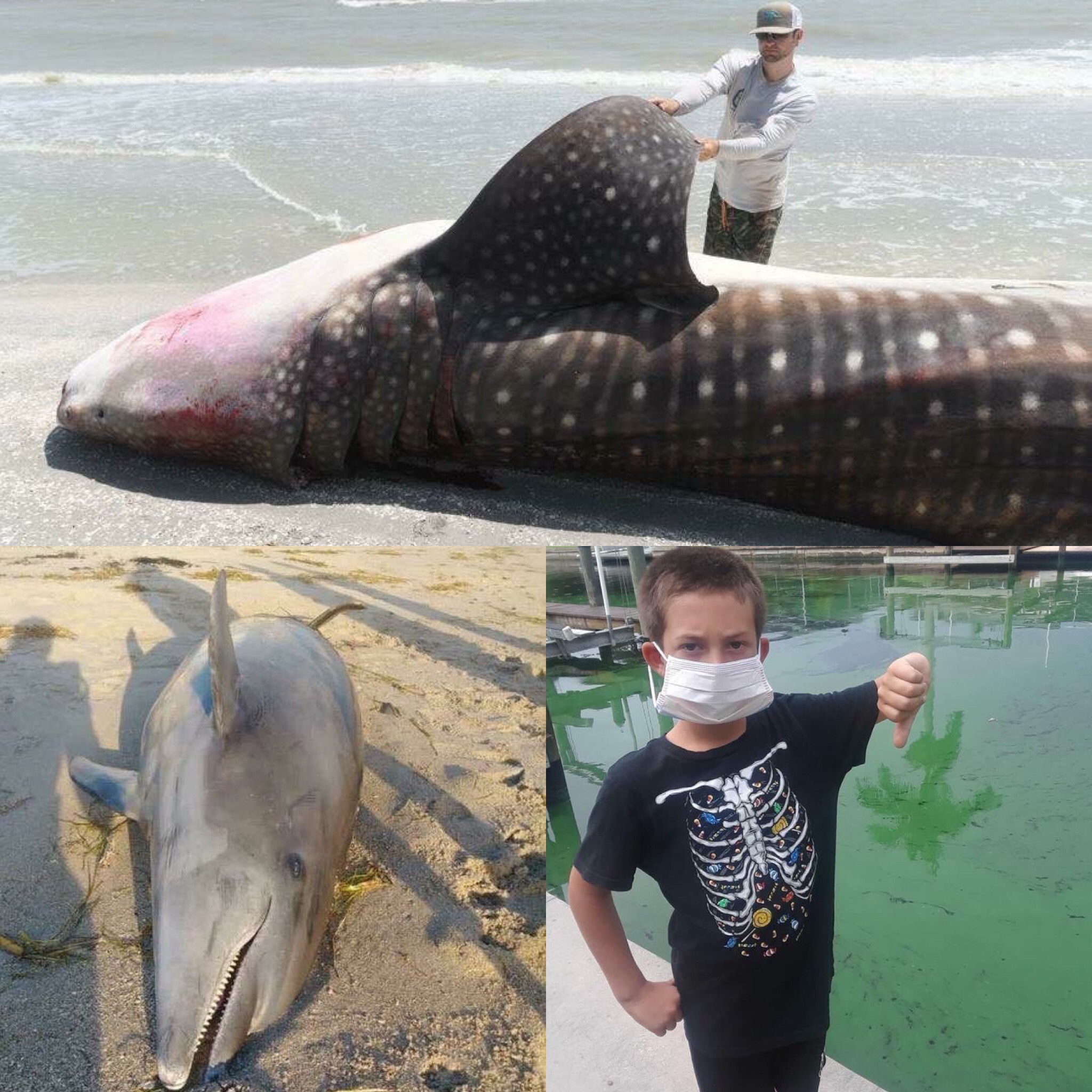(Note from Erin: I Erin Elizabeth will be broadcasting live from the Florida coast, where I live, with guests this evening on the opposite coast showing the damage, and carnage. August 1, 2018. Thank you to News-Press for taking the time to report on this important topic. )
“Despite Mote Marine Labs, Florida’s Fish and Wildlife Commission, and the Mainstream Media’s unilateral denial that Green Algae releases from Lake O’ would catalyze what is possibly the worst Red Tide outbreak in the state’s history, it’s now happened and will continue to happen until the grotesquely obvious truth is accepted.”1
Yesterday 500 people packed a Cape Coral Yacht Club ballroom to demonstrate their anger, fears, and tension during a two-hour presentation with the U.S. Army Corps of Engineers that didn’t go well; “…in the short-term, there’s nowhere else for the Lake Okeechobee water to go but east or west of the lake.”2 And that spells continued trouble for the ecosystem and anyone who wants to enjoy said ecosystem.
“This year’s Red Tide outbreak is a direct, and ‘natural’ consequence of the Lake O’ releases and has already killed countless organisms in the sea, all the way up the food chain to sharks and whales, manatees and turtles.”3 There have even been reports of harm done to the exposed population and some hospitalizations.
Many people tell us they were turned away as they could not fit inside. But the ones who were there were upset, to say the least. So much so that at times, Cape Coral Mayor Joe Coviello had to ask people to keep order.
“Lt. Col. Jennifer Reynolds, a deputy district engineer with the Army Corps, gave a 40-minute presentation about the Lake Okeechobee releases of nutrient-laden water, which, combined with high temperatures have triggered a toxic algae bloom unlike anything Southwest Florida ever has seen.
The green and blue algae have infiltrated many of Cape Coral’s canals, polluted the Caloosahatchee River and created challenges throughout the region, which relies on the tourism industry for many of its jobs.”4
She would go on to spend almost 90 minutes answering questions. Like the one from Cape Coral fishing boat captain David Menist, who asked her “How can you possibly send this water our way, knowing what’s in it?” She responded that there was just nowhere else to send it because the infrastructure didn’t exist. (When the level of the lake approaches 15 feet above sea level, the Army Corps has to release water because a major rain event could lead to “catastrophic flooding around the lake and the loss of lives and property.”5)
Reynolds also fielded a question from Cape Coral fishing captain Bob Buhler, who said, “My question to you, is why during all of this didn’t you mention Big Sugar?”6
And she responded, “That’s a great question. There are a couple of issues there. Agricultural land is privately-owned. Part of my job is keeping privately-owned land dry. For me, all private land is considered equal. I am required by law to protect that land. The state is responsible for setting and maintaining the water quality standards.”7
Big sugar is an issue we have been trying to draw attention to for years. And even though they deny that the Red Tide is fed by green algae that originates from land-based, human activities, peer-reviewed, published research proves this fact.
If the issue is the flow of nutrients into the lake and cutting them off would solve the problem, why don’t they just do that? Big Sugar. And private property. And money.
“The sugar industry fertilizes its lands just south of the lake. The runoff from those lands, which contain the phosphorous and nitrogen that help algae bloom in heated conditions, sometimes flows naturally north into the lake and sometimes flows north by being back-pumped when those canals are near overflowing to prevent flooding of those lands…
Lake Okeechobee comprises 730 square miles… There are three million acres of watershed, but eight million acres of water must be dispersed.”8
The Congress directs and demands that private property be protected, “not just at agricultural areas such as sugar farms south of the lake, but anywhere that would be impacted by flooding.”9
(At least one dead manatee washed up onto the Cape Coral Yacht Club boat ramp Tuesday afternoon, July 31, 2018. Misty Stendal Stumpf)
Again, in the short-term, the nutrients must be reduced but that won’t solve the entire problem. The long-term solution is for the federal and state governments to build a watershed, which they are doing south of the lake, to hold additional water.
(An aerial view of toxic algae bloom flowing in a canal Friday, July 14, 2018 in Cape Coral, Florida. news-press.com, news-press.com)
Brian Hamman, the Lee County Commissioner, attended the meeting and announced that $150,000 of county money had been approved to search for someone to help clean up the algae. Sadly, there are no local vendors who do that kind of work and there is no place to put the algae. So, the issue now goes to the state legislature.
We will update you as more information becomes available.












